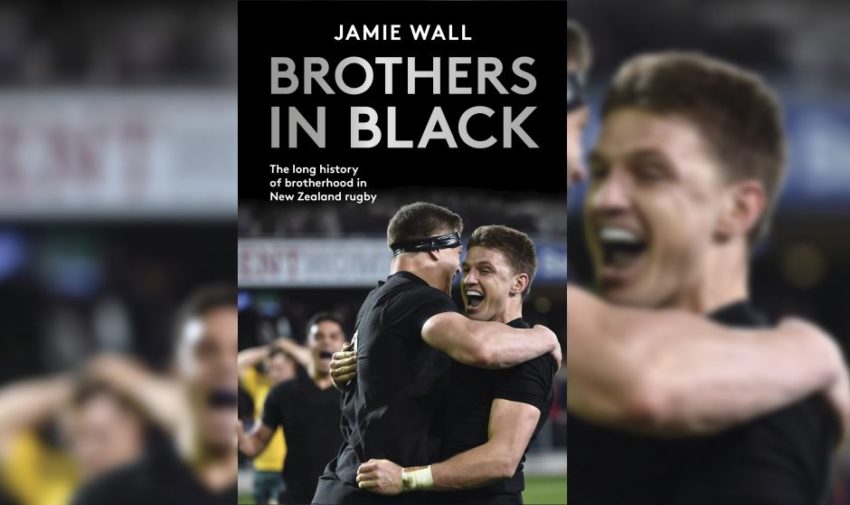Brothers in Black
0 Do you think we are out of new angles to chronicle the history of the All Blacks?
Do you think we are out of new angles to chronicle the history of the All Blacks?
Not so. In Jamie Wall’s Brothers in Black there is a retrospective of All Black history through the narrative of brothers who have played for the All Blacks. It is a tale of individual players (x2) interwoven with the history of New Zealand’s most culturally significant side.
And it is a way of intertwining the biggest moments in the sport with personal stories.
In doing so it also charts how rules and traditions have evolved over the years. In the early years it was not unusual for a touring squad to be picked the previous year. Trial games were almost invariably North v South matches.
Following World War II it seemed like tradition to have grounds filled with 5,000 people or more over capacity in the standing room terraces days. That crowd at Eden Park in 1956 is still the record for a sport event in New Zealand, despite the millions of dollars that have been thrown at the venue since.
And as recently as 1960 non playing squad members performed the duty of touch judges. Ian Clarke, complete in All Black blazer raising his flag the moment a match-saving touchline conversion left his brother’s boot.
In contrast the chapter on the Woodman brothers is based around the career and quotes of Portia.
The book starts with the 1888/9 Natives tour of the UK, such an important part of New Zealand rugby history, with the story of the Warbecks and Wynyards. This is the first example of Wall dealing with so much more than the rugby. As a keen historian, a lot of this is about how the history of rugby inevitably intertwines with the nation’s history.
For example, there is an interesting digression into analysing how we remember World War 1, and he impact it had on the Brownlie brothers and others. The travails experienced in Egypt were a back story to a send-off at Twickenham in 1924.
And on a rugby note, there are various observations; between the wars All Blacks squads were names the previous season, and how the Waikato Rugby Union was not formed until 1921.
Throughout there are amusing anecdotes. On the 1928 tour of South Africa, captained by Maurice Brownlie: “..he wasn’t helped by the team’s manager, Boer War veteran Bill Hornig, who kept dropping dreadfully inappropriate anecdotes at after-match functions about the last time he’d been in South Africa.”
Legend has it that in retirement Maurice would wear his All Black blazer to dinner every Sunday night. That tale also confirms that New Zealand outrage over a red card is not a new thing.
As it happens three of the four All Blacks to be sent off in tests feature in this book, with the other one having a sister who has represented New Zealand in the sport.
The in depth chapters are the best. Although the Clarke brothers didn’t quite have the quirkiness of the Brownlies they were such a rural throwback to the 1950s. Growing up on the Waikato farm with goalposts on one field, and a cricket pitch on the other. And five; count them, brothers played for Waikato.
The chapter on the Meads brother contains this superb assessment of Colin from Stan.
I think we complimented each other quite well. He was more robust than me, no doubt about that, but I was a better jumper whereas Colin wasn’t really. He operated closer to the front of the lineout where you could get involved in play differently.
Colin’s involvement in the ill-fated Cavaliers tour (likewise the Whetton brothers) and subsequent mentorship of Martin Johnson are not shied away from.
Naturally, it all ends with the Barretts.
While there is a justified tone of celebration about the book it is not a cheer-leading affair. The baffling lone wolf contact with Apartheid era South Africa is confronted at various stages. And, on the field, the 1994 Springbok tour is called out for being the turgid affair it was.
While keen rugby students will be aware of most of the stories there will be several that will be new. But it’s the different framing of it that makes is a decent read.
